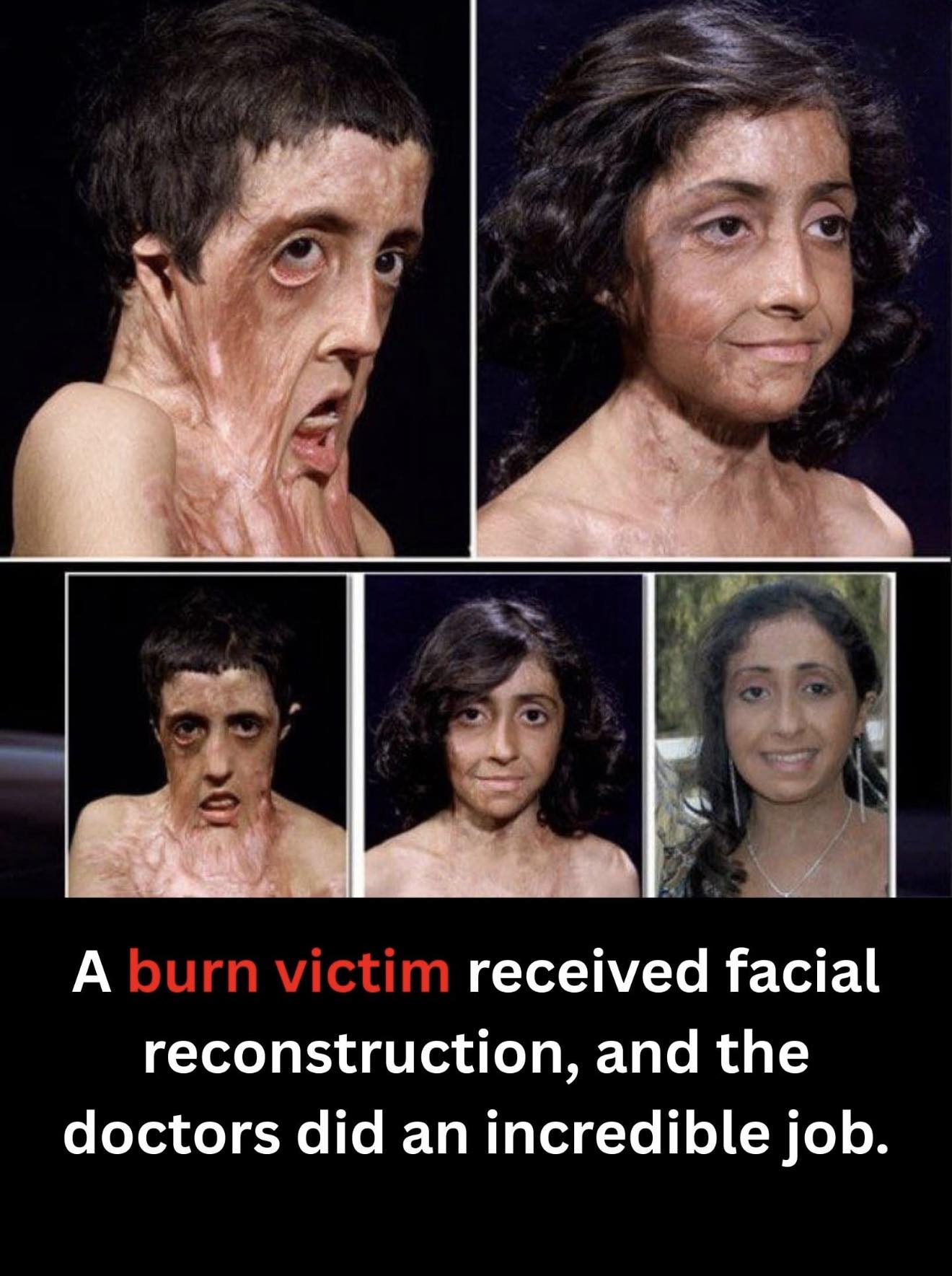When tragedy strikes, few stories shine as brightly as that of Zubaida Hasan, a young girl from Afghanistan whose journey from unimaginable pain to hope and healing captured hearts across the world. Her story is not just about survival—it is a story of courage, compassion, and the power of humanity that transcends borders.
In August 2001, nine-year-old Zubaida was living a simple life in Afghanistan when her world was suddenly torn apart. A kerosene stove exploded in her family’s home, engulfing her in flames. Within seconds, her face and upper body were severely burned. Her injuries were devastating—her skin fused together, her right arm was stuck to her chest, and her face was left disfigured. She could neither smile nor close her eyes.
Her parents rushed her across the border to Iran, where they hoped medical treatment could save her. But after months of surgeries and painful procedures, doctors concluded there was little more they could do. The burns were too severe, the scar tissue too deep. Her father, heartbroken yet determined, refused to give up hope.
In a desperate act of love, he brought Zubaida back to Afghanistan and sought help from U.S. military doctors stationed in Kabul. They were deeply moved by the child’s condition and courage. Recognizing the urgency of her situation, they decided to intervene—setting into motion one of the most extraordinary rescue and recovery stories ever told.
Through the combined efforts of the U.S. military and international organizations, Zubaida was transported to California, where she would begin a new chapter in her life. She was admitted to the Grossman Burn Center, one of the leading burn treatment facilities in the United States, under the care of Dr. Peter Grossman, a renowned reconstructive surgeon.
What followed was nothing short of miraculous. Over the next two years, Zubaida underwent more than a dozen complex surgeries, each one designed to restore not only her physical appearance but also her ability to live a normal life. Skin grafts, tissue reconstruction, and months of rehabilitation slowly transformed her appearance.
But her recovery went beyond the physical. During her treatment, Zubaida formed an unbreakable bond with Dr. Grossman and his wife, Rebecca. They welcomed her into their home, becoming her guardians and giving her the love, care, and stability she needed to heal emotionally.
Dr. Grossman later described Zubaida as “one of the most courageous and inspiring patients I have ever treated.” Her determination amazed everyone around her. Despite enduring unimaginable pain, she remained cheerful, polite, and grateful—often singing, laughing, and dreaming of one day helping others as she had been helped.
As her surgeries continued, the transformation became evident. For the first time since the accident, she was able to close her eyes, smile, and lift her arm freely. Her progress stunned even the medical community, who called her recovery one of the most remarkable they had ever witnessed.
Zubaida’s journey was soon covered by major media outlets, including ABC News, The Los Angeles Times, and Discovery Health Channel, which featured her story in a documentary titled “A New Face for Zubaida.” The world watched in awe as this young girl from a war-torn country found healing and hope in a foreign land through the kindness of strangers.
Her story became a symbol of resilience, proving that compassion knows no boundaries. It showed that even amid political conflict and global division, humanity can come together to make miracles happen.
After her successful surgeries and rehabilitation, Zubaida returned to Afghanistan, where she reunited with her family. The once-hopeless girl who had been told she would never recover came home smiling—a living embodiment of perseverance and faith.
Her case inspired doctors, volunteers, and charities around the world to continue their work with burn victims, especially children in war zones. It also emphasized the importance of global medical collaboration—where expertise, empathy, and resources combine to save lives across borders.
Even years after her treatment, Zubaida remains an inspiration. Her name is often mentioned in medical conferences and humanitarian discussions as an example of what can happen when science meets compassion. She reminds the world that hope is the most powerful medicine of all.
Today, those who followed her story still recall the moment she first smiled again. That single smile—something most people take for granted—represented victory over pain, disfigurement, and despair. It represented the human spirit’s unbreakable will to survive.
The story of Zubaida Hasan is not just about a medical miracle—it’s about love, kindness, and resilience. It’s about a father’s unwavering determination, a doctor’s compassion, and a community’s commitment to healing a little girl who had lost everything.
From the ashes of tragedy, Zubaida rose again—stronger, braver, and more beautiful than ever before. Her journey continues to inspire millions worldwide, reminding us that no matter how dark life becomes, there is always a way forward when people choose to care.
Her life also raises important awareness about burn victims in developing countries, where access to proper medical care is often limited. Zubaida’s story has encouraged humanitarian groups to expand their outreach and support to children facing similar tragedies.
In every way, Zubaida represents the best of humanity—the strength to endure, the courage to heal, and the grace to forgive. Her scars, once symbols of pain, have become marks of victory.
Today, years after that fateful day in 2001, the world continues to remember and celebrate the little Afghan girl who survived the impossible. Through her, we are reminded that even the deepest wounds can heal when touched by compassion.
In an age where division often dominates headlines, Zubaida’s journey serves as a timeless lesson in unity. It proves that when the world stands together—with empathy, innovation, and determination—miracles are not only possible; they are inevitable.

